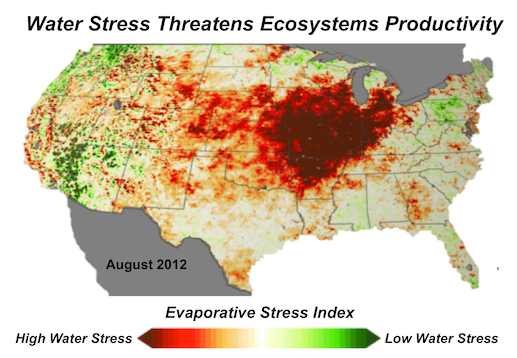NASA Launches New Mission to Detect Plant Water Use from Space
Published on by Water Network Research, Official research team of The Water Network in Technology
ECOSTRESS will measure the temperature of plants from space. Scientists will be able to use that temperature data to better understand how much water plants need and how they respond to water shortages.
 Thanks to a new NASA instrument that soon will be installed on the International Space Station called ECOSTRESS (ECOsystem Spaceborne Thermal Radiometer Experiment on Space Station). ECOSTRESS will measure the temperature of plants from space. This will enable researchers to determine plant water use and to study how drought conditions affect plant health.
Thanks to a new NASA instrument that soon will be installed on the International Space Station called ECOSTRESS (ECOsystem Spaceborne Thermal Radiometer Experiment on Space Station). ECOSTRESS will measure the temperature of plants from space. This will enable researchers to determine plant water use and to study how drought conditions affect plant health.
Plants draw in water from the soil, and as they are heated by the Sun, the water is released through pores on the plants’ leaves through a process called transpiration. This cools the plant down, much as sweating does in humans. However, if there is not enough water available to the plants, they close their pores to conserve water, causing their temperatures to rise.
Plants use those same pores to take up carbon dioxide from the atmosphere for photosynthesis – the process they use to turn carbon dioxide and water into the sugar they use as food. If they continue to experience insufficient water availability, or “water stress,” they eventually starve or overheat, and die.
ECOSTRESS data will show these changes in plants’ temperatures, providing insight into their health and water use while there is still time for water managers to correct agricultural water imbalances.

ECOSTRESS will hitch a ride to the space station on a NASA-contracted, SpaceX cargo resupply mission scheduled to launch from Cape Canaveral Air Force Station in Florida on June 29. Once it arrives, it will be robotically installed on the exterior of the station's Japanese Experiment Module Exposed Facility Unit, the U.S. Space agency said.
Over the next year, ECOSTRESS will use the space station’s unique low Earth orbit to collect data over multiple areas of land at different times of day. The instrument will produce detailed images of areas as small as 43 by 76 yards (40 by 70 meters) -- about the size of a small farm -- every three to five days.
Read more about NASA detecting plant water use from Space at TechSource
Media
Taxonomy
- GIS & Remote Sensing Technology
- GIS
- GIS for network
- Environment
- GIS & Remote Sensing
- application of GIS and RS